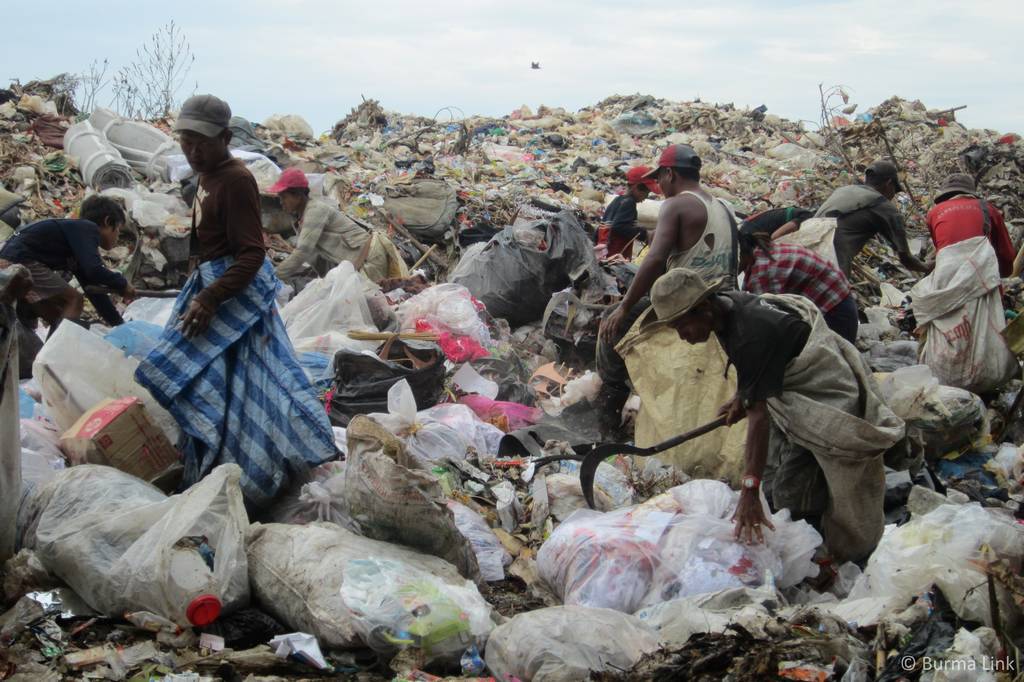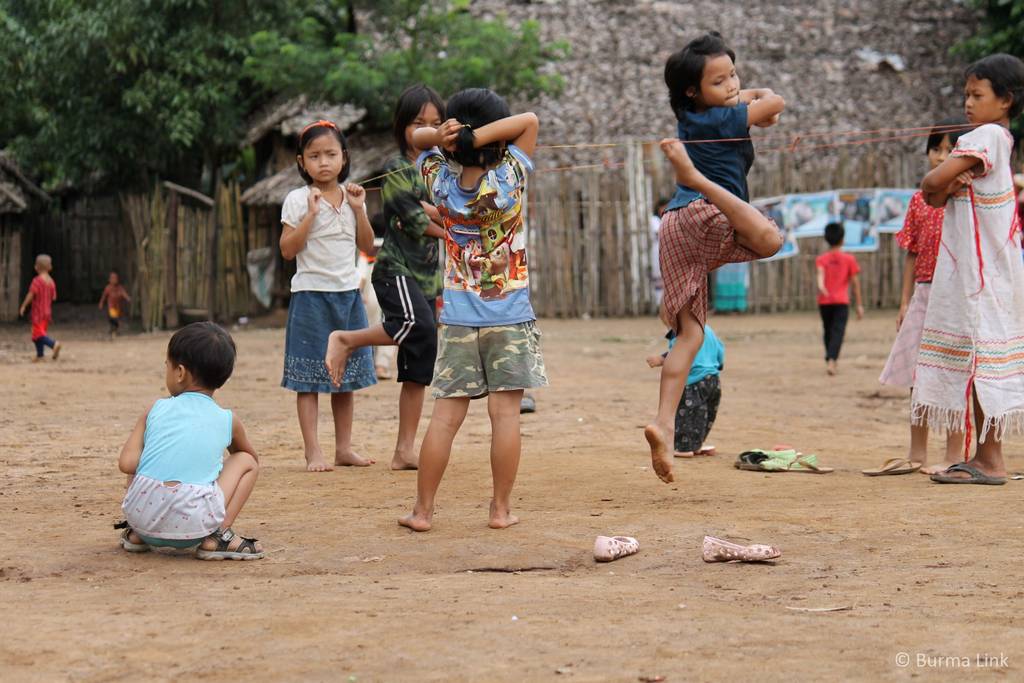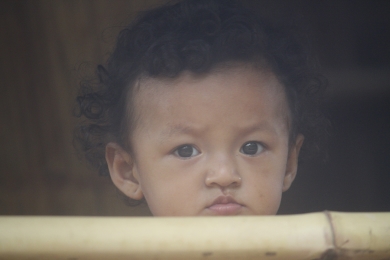urma has experienced one of the biggest humanitarian crisis and most protracted refugee situations in the world. Millions of people from Burma, mostly ethnic nationalities in the country’s borderlands, have fled armed conflicts and Burmese military run human rights abuses that have spanned over several decades. The civil war in Burma that started with the Karen armed opposition in 1949 has been dubbed as the longest ongoing conflict in the world, and the Burmese military, in order to defeat ethnic armed opposition, has targeted their military campaigns against ethnic civilians. The result has been ongoing persecution of ethnic villagers particularly in rural areas where ethnic armed opposition has been operating.
In total, around three million people are thought to have fled armed conflicts in Burma (Refugees International, 2015), whilst nearly 700,000 remain internally displaced, majority in southeast Burma (IDMC, 2016a). Due to the close proximity, hundreds of thousands have fled conflict and persecution to neighbouring Thailand. Most of these refugees are Karen, Karenni, Shan, and Mon. There are also refugees from Burma who belong to Arakanese, Chin, Kachin, Naga and countless of other ethnic nationalities. As successive military regimes have exerted repressive military control over the resource rich ethnic borderlands all over the country, ethnic armies have fought to protect their lands and their people, and ethnic civilians have suffered the consequences. In addition, thousands of majority Burman (also called Bama) civilians, usually due to their involvement in the political pro-democracy struggle in Rangoon or in other major cities, have crossed the border to flee from the repressive government. Despite Burma’s opening up since 2011 and the triumph of the National League for Democracy (NLD) in the 2015 elections, little has changed for Burma’s borderlands and the root causes of the conflict remain unaddressed.
Meanwhile, as the military control in Burma has gradually eroded livelihoods and induced poverty through forced labour, arbitrary taxation, and restrictions on movement and trade, many civilians have fled to Thailand simply to avoid further impoverishment (see e.g. KHRG, 2008). Others have come with the hope of accessing education, medicine, or work opportunities. Distinguishing between refugees and migrants is difficult in this context; thousands of students, for example, have entered the refugee camps solely for education while thousands of de facto refugees reside outside the camps as undocumented immigrants. With the Thai authorities placing significant restrictions on the lives of refugees and the work of the United Nations High Commissioner for Refugees (UNHCR) in the refugee camps, many refugees warranting international protection have chosen to live illegally outside of the camps. At the same time, those who have fled military-induced poverty, for example, are not recognized as refugees under international law.
No one knows the exact numbers of those who have crossed the border from Burma to Thailand, and much less the number of people who would fall under international protection as refugees. The statistics put together by the UNHCR and The Border Consortium (TBC), the latter an aid coordination network on the border, are gross understatements of the real refugee figures as de facto refugees remain outside of their protection and aid. According to the UNHCR’s figures, Thailand hosted 72,900 registered refugees and 51,500 ‘people in refugee-like situations’ from Burma in January 2015 (UNHCR, 2015a). According to TBC figures from August 2016, a total of 103,762 refugees reside in ten refugee camps along the Thailand-Burma border (TBC, August, 2016). TBC’s database includes all registered and unregistered refugees who reside in the camps. As for the internally displaced persons (IDPs), Internal Displacement Monitoring Centre (IDMC) estimates that there were 662,400 IDPs due to conflict and violence in Burma as of March 2015, majority of them in southeast Burma (IDMC, 2016a).
“It is better to run away. If they [the SPDC] catch us they will be very mean to us, it is better to escape. It is better to live in Thailand, if you live in Burma now it is very, very bad”. (Naw M–, a 23-year-old female from K— village, Papun District, interviewed in February 2007; KHRG, 2008, p. 135)
The thousands of refugees in the Thailand-Burma border camps have lived in a protracted situation for years, even decades, with no way out. Their prolonged confinement in the camps has created not only many protection concerns but also social and psychological problems. As the Thai authorities have prohibited refugees from travelling, farming, or collecting firewood outside the camps, the refugees’ coping mechanisms have been severely eroded. During the year 2015, TBC reports that around 3,300 people returned to Burma, whilst another 6,297 refugees were resettled to third countries (TBC, 2016a). The population decrease was slightly less than anticipated by the TBC. The UNHCR’s planning figures are substantially higher with the agency’s key figures for 2016 indicating that 45,000 refugees from Burma, nearly half of the camp population, is “targeted to depart through assisted voluntary repatriation” (UNHCR, 2016b). For refugees, life in the camps has recently become more uncertain than ever as there are ongoing significant reductions in aid and food rations given to refugees because international aid has shifted from the border to central Burma; rumours of repatriation are spreading across refugee communities; and increasing travel and living restrictions in the camps have made refugees’ lives even more constrained since the Thai military coup in May 2014 (see e.g. Saw Yan Naing, July, 2014a).
Inside the Karen State in eastern Burma, it is easy to see why thousands cross the border to Thailand to escape impoverishment. In 2010, TBC completed a food security and poverty assessment in the area and reported that over two-thirds of households were not able to meet their basic needs (TBC, 2011). In 2012, TBC found in a comprehensive study that 59% of people on rural southeast Burma were impoverished and 73% lacked access to safe drinking water (TBC, 2012c). Another TBC survey conducted during March and April 2013 (TBC, 2013e) found similar results. These statistics are particularly troubling considering that Burma is a resource rich country where the standard of living for the population should be considerably higher than this. Through economic mismanagement (or deliberate concentration of wealth in the hands of Burmese generals) and military terrorisation of the civilian population, Burma had been transformed from one of the wealthiest southeast Asian countries to one of the poorest, having even been listed as one of the world’s least developed countries in 1987 (Booth, 2003).
Due to difficulties in entering the camps and the restricted nature of life in the camps, an overwhelming majority of Burma’s exiles, including de facto refugees, live in Thailand as illegal aliens. For generations, they have lived under constant fear of deportation and abuse, trying to build their lives in the peripheries of Thai society, often working in unsafe conditions, underpaid and at risk of exploitation and human trafficking (Green-Rauenhorst et al., 2008). Meanwhile, thousands of refugees have died in the border camps never able to return to their homeland. And all the while, a new generation of refugees has been born in the camps, many of whom have never left the gates of the only home they know. Since 1991, the UN has passed annual resolutions calling on the Burma Government to respect human rights (e.g. UN General Assembly, 2014a, 2015), and whilst the conflict and abuse continues, the EU recently stated that they will abandon the submission of another UN resolution criticising the country’s human rights record (see e.g. Kaspar, September 2016).
Although there is a framework of international principles that recognise and protect the inherent dignity and equal, inalienable rights of humanity, these principals have little significance to refugees from Burma who live in Thailand. According to Article 14 (1) of the Universal Declaration of Human Rights (UDHR); “Everyone has the right to seek and to enjoy in other countries asylum from persecution”. The 1951 United Nations Convention and its 1967 Protocol Relating to the Status of Refugees include the principle of nonrefoulement; “No Contracting State shall expel or return a refugee in any manner whatsoever to the frontiers of territories where his life or freedom would be threatened on account of his race, religion, nationality, membership of a particular social group or political opinion.” Thailand is not a party to the 1951 Convention or its 1967 Protocol, and as such, there are officially no refugees or refugee camps in Thailand. Instead, the terms used have been ‘Persons of Concern’ and ‘temporary shelters’.
On the other side of the coin, one must acknowledge the immense difficulty in dealing with a refugee situation as vast and protracted as the one along the Thailand-Burma border. Accordingly, in 2008, the International Rescue Committee (IRC) pleaded the international community to increase support for essential services to unrecognised refugees. IRC stated that the Thai government should not have to shoulder the responsibility of hosting the refugee population on their own (Green-Rauenhorst, Jacobsen, & Pyne, 2008).

Migrants looking for plastic in the Mae Sot rubbish dump. People in the dump make a living by selling recyclables they find amidst the rubbish. (Photo: Burma Link)
As Thailand has been a host to scores of exiles from Burma, it has also become a vibrant hub for Burma’s opposition and capacity building movement. Whilst many exiled activists and organisations have moved at least some operations inside the country after the opening of more space for civil society, numerous groups still operate from the Thailand-Burma border, which has been home to various local and international aid, education, advocacy, and pro-democracy organisations for decades, working towards peaceful and free Burma through capacity building programmes and running awareness raising trainings and workshops, as well as documenting human rights abuses inside Burma. Due to this, a high percentage of the people of Burma who have been educated in human rights and Burma issues, among other fields of study, live on the Thailand-Burma border. Their knowledge and skills will be invaluable for the future of Burma, especially when building a solid foundation of institutions that will be integral to a functioning civil society based on principles of freedom and justice.
A number of local and international community-based organisations (CBOs) and non-governmental organisations (NGOs) in Thailand also provide aid for IDPs in eastern Burma who cannot be reached from inside the country. With non-existing health facilities in many rural areas, thousands of people annually also travel across the border to receive medical treatment at the Mae Tao Clinic in the Thai border town of Mae Sot in Thailand’s Tak Province. The clinic has treated hundreds of thousands of patients from Burma for free for over two decades.
Although the political and social transformation in Burma continues, and the NLD-led Government took office in April 2016, these changes have affected the country’s population in varying ways. On the border, the optimism of the international community and the infectious idea that those displaced will soon begin to move back to Burma has led to further decline in donor funding, deeply impacting the refugees and IDPs whose lives depend on international aid as well as essential services and programs offered by local ethnic service providers. While there is now less fighting and direct attacks on civilians in southeast Burma, land grabbing has increased and Burma Army is fortifying their positions in ethnic areas (see e.g. KHRG, 2013a, 2014a; Burma Link’s interview with KNDO in June 2016), bringing to question their commitment to peace. Furthermore, renewed fighting in the Karen State in September 2016 displaced around 4,000 Karen civilians (Karen Rivers Watch, September, 2016). For many people and organisations along the Thailand-Burma border, the main change that has occurred as a result of the reforms has been a significant reduction in aid and funding.
While local organisations now have more opportunities to work inside Burma, many CBOs are concerned that donors are pushing them inside the country before they feel ready to safely operate there. Even when some organizations feel relatively safe to operate inside, many of their programs such as capacity building internships, that in Thailand would have access to foreign volunteers, internet, electricity and critical information, are severely hampered when forced to be conducted inside. Other times the organizations, when pushed inside, have to make numerous compromises to their work, including self-censoring information and language used in their publications, at times forcing the organizations to compromise the very core values and goals that the organization was founded on in the first place.
There are now also growing fears that refugees will be forcibly repatriated, directly or indirectly, before conditions permit them to return with a sense of hope and dignity. Talks about repatriation have caused anxiety among the communities in the camps as formidable obstacles for safe repatriation, including lack of sustainable peace, ongoing conflict and human rights violations, and widespread landmine contamination, still remain. As donors are reducing funding and Thai authorities are placing increasing restrictions on refugees’ movements to work outside the camps, many refugees have started feeling squeezed out of the camps, returning due to push factors in the host country rather than pull factors in their country of origin, thus contradicting the very definition of a voluntary repatriation as stipulated by the UN (UNHCR, 1996).
The border has been a vibrant hub for working towards a free, democratic and free Burma for decades. Until there are solutions to the political goals of the country’s various ethnic nationalities, there will be no sustainable solutions for the conflict-displaced populations. The international community, including donors, should continue to support work on the border before and during any transition. For real change in Burma, it is imperative that Burma’s conflict affected communities and border based organisations are fully included and supported in taking part in the process (for more information, refer to Repatriation of refugees).

Refugees continue their day-to-day life in the camps amidst growing fears that repatriation may be forced on them all too soon. (Photo: Feliz Solomon).
Updated October 6, 2016.

